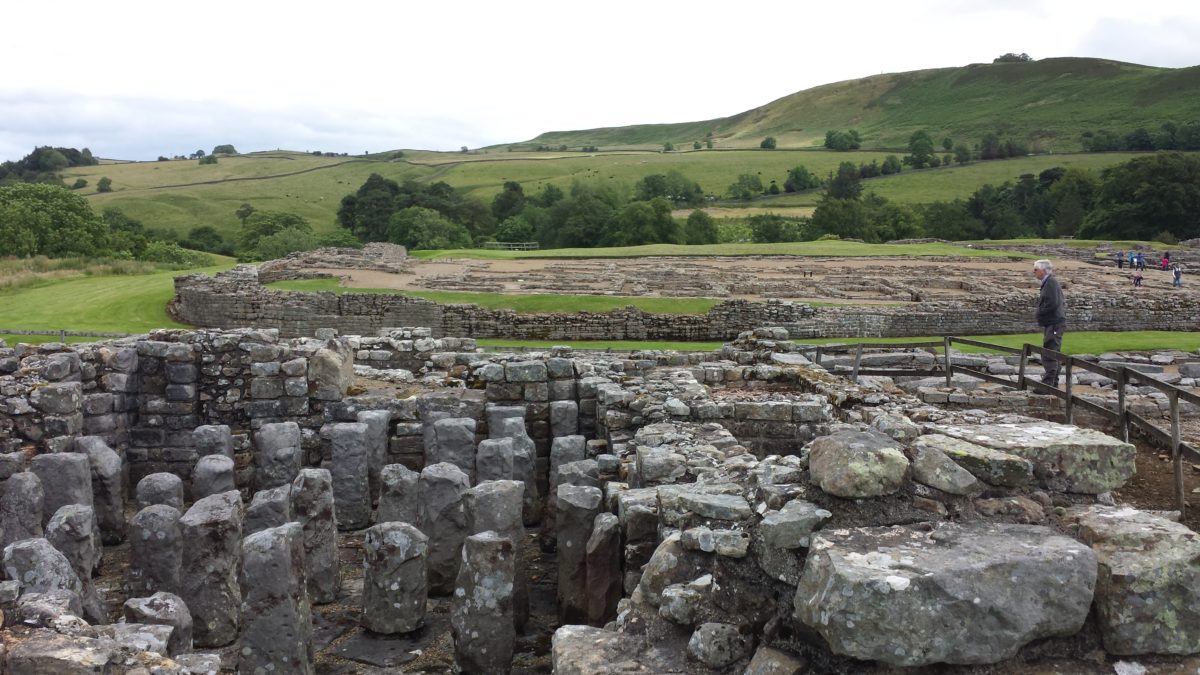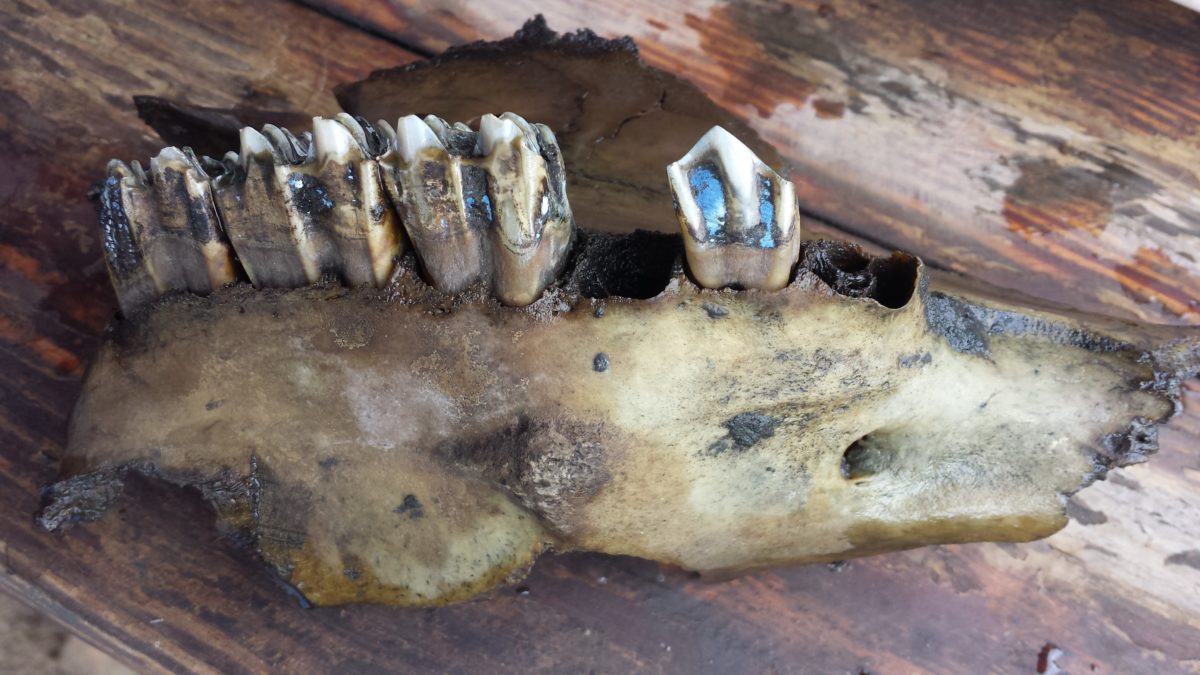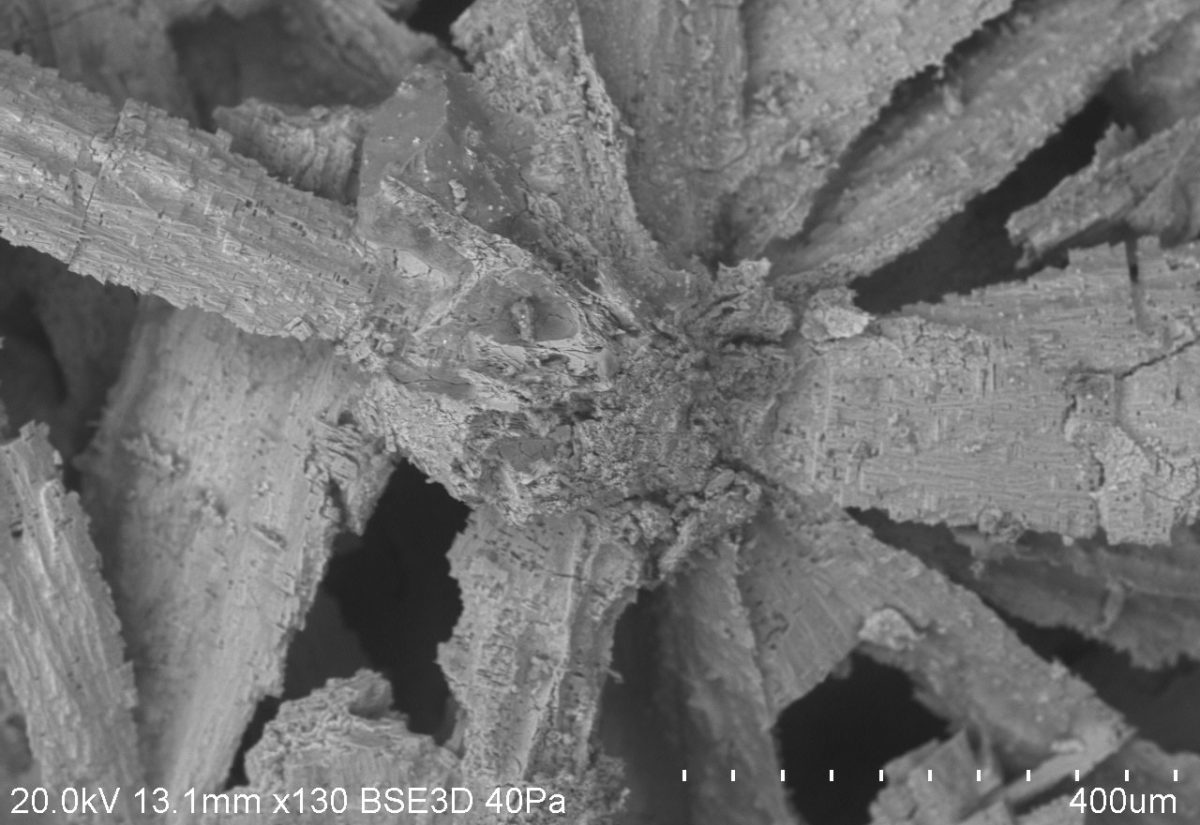This image shows the adherence of vivianite on wood recovered at Vindolanda.
Untreated wood normally degrades whilst buried due to rot and bacterial attack. The conditions at Vindolanda preserve wood exceptionally well. Vindolanda is known particularly well for its preservation of wooden tablets with handwritten correspondence. These adherence of vivianite into the wooden tablets seem to have helped preserve them over millennia of burial. TUBA is researching how vivianite adheres to wood, and how wood degrades at Vindolanda.




